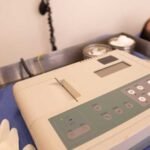
Hypertrophic Type, Dilated Type? Causes, Types, Symptoms, Diagnosis, and Treatment of Cardiomyopathy
Cardiomyopathy is a disease of the heart muscle. You may rarely hear the term “myocardial disease”. Don’t worry, this article will introduce you to the impact of cardiomyopathy disease on the heart and our health.
What is cardiomyopathy?
Myocardial disease is a type of heart disease. Due to genetic or other factors, some patients may have cardiac muscle disease, causing the heart chambers to enlarge, but the myocardium is normal or becomes thin instead (such as dilated cardiomyopathy), and some have thickening of the myocardium (such as dilated cardiomyopathy). Such as hypertrophic cardiomyopathy), some myocardial tissue becomes hard but the heart may not be hypertrophic or enlarged (such as restrictive cardiomyopathy).
Myocardial disease will affect the normal operation of myocardial function, causing the heart to have difficulty pumping blood, making the heart weaker and weaker, leading to heart failure or arrhythmia.
Types of cardiomyopathy
Cardiomyopathy can be divided into the following 5 types:
1.Dilated cardiomyopathy
Dilated cardiomyopathy is the most common cardiomyopathy. The patient’s main chamber (left ventricle) responsible for sending blood is enlarged, the thickness of the heart muscle is normal or thinned, and the contraction of the heart muscle becomes weaker, resulting in the left ventricle being unable to effectively pump enough blood out of the heart when it contracts.
In this situation, the ventricular ejection fraction (EF, which refers to stroke volume/ventricular end-diastolic volume) is lower than normal, which is a typical systolic dysfunction. It is worth mentioning that dilated cardiomyopathy is prone to mitral valve insufficiency due to enlargement of the ventricular chambers.
The cause of dilated cardiomyopathy can be primary, such as genetic or hereditary. It can also be caused by secondary viral infections such as Coxsackie B, drug abuse such as alcohol or cocaine, or valve disease or heart rhythm disease. Caused by irregularities. However, it is most often caused by coronary heart disease (Coronary heart disease) or myocardial infarction (Myocardial infarction), and it mostly occurs in middle-aged people.
2.Hypertrophic cardiomyopathy
Hypertrophic cardiomyopathy is the most common type of primary cardiomyopathy. It is a somatic chromosomal dominant mutation, and the mutation location is in the myosin heavy chain on the sarcomere. This lesion causes thickening of the heart muscle tissue. Generally speaking, myocardial thickening most commonly occurs in the ventricles and ventricular septum and is divided into 2 different types:
- Non-obstructive ventricular muscle thickening:
Simple myocardial thickening. Thickened heart muscle will cause the heart chambers to shrink, resulting in a reduction in stroke volume. In this case, although the stroke volume is reduced, the left ventricular ejection fraction remains normal because the end-diastolic volume of the ventricle is also reduced. This is a typical diastolic dysfunction. - Obstructive ventricular muscle thickening:
If myocardial thickening occurs in the ventricles and is combined with the ventricular diaphragm, it will prevent the left ventricle from pumping blood to the aorta during systole, and the ventricular ejection fraction (EF) will also decrease.
If hypertrophic cardiomyopathy is combined with ventricular diaphragm hypertrophy, it is most concerning that it will induce sudden death in young people and athletes. The main cause of sudden death is the induction of ventricular fibrillation.
3.Restrictive cardiomyopathy
In patients with restrictive cardiomyopathy, the heart muscle becomes stiff, making it unable to expand elastically enough to fill the ventricles with blood when the heart beats. In this case, stroke volume and ventricular end-diastolic volume decrease simultaneously, so the ventricular ejection fraction remains normal, which is diastolic dysfunction.
Most patients with this type of cardiomyopathy are elderly and are caused by infiltrative diseases, such as amyloidosis or sarcoidosis, or sequelae of radiation therapy. It is also related to storage diseases, such as hemochromatosis or glycogen storage disease or Fabry’s disease.

4.Arrhythmogenic right ventricular cardiomyopathy
In patients with arrhythmogenic right ventricular dysplasia (ARVC), the right ventricular myocardial tissue is replaced by fat or scar (fibrous) tissue, resulting in abnormal conduction of cardiac electrical signals and triggering arrhythmia. This disease is quite rare and is one of the causes of cardiac arrest and even sudden death in young adults or athletes.
5.Unclassified cardiomyopathy
Myocardial lesions that cannot be classified into the above four categories, such as: Takotsubo cardiomyopathy (also known as heartbreak syndrome) or left ventricular noncompaction (Left ventricular noncompaction), etc.
Cardiomyopathy symptoms
There are few obvious symptoms in the early stages of cardiomyopathy, and some people may not feel any abnormality in the heart until acute heart failure or arrhythmia occurs. However, generally speaking, as the disease gradually progresses, patients may develop the following problems :
- Coughing when lying down
- Swelling of lower limbs
- Swollen veins in the neck
- Arrhythmia
- Heart murmur
- Fatigue (easily tired)
- Difficulty breathing, easily out of breath, even while resting
- Rapid heartbeat
- Chest pain (feeling like something heavy is pressing on you)
- Dizziness
- Faint
- Ascites

When should you seek medical advice?
If you find that you meet one or more of the symptoms listed above, you can consider seeing a doctor. Although it is not necessarily caused by myocardial disease, these symptoms may mean that you have other related problems with your heart. In addition, if you have severe difficulty breathing, chest pain, or feel like passing out, please call 999 for emergency medical assistance as soon as possible.
Complications of cardiomyopathy
- Heart failure:
The heart cannot pump enough blood, causing the heart function to gradually decline. - Heart valve insufficiency:
Myocardial disease may cause the heart to enlarge, preventing the valve from fully closing, causing blood to flow backward. - Thrombus:
Ineffective pumping of blood causes blood to accumulate in the ventricles, forming clots. - Cardiac arrest or sudden death:
If hypertrophic cardiomyopathy is accompanied by ventricular diaphragm hypertrophy, it may prevent blood from being sent to the aorta during ventricular contraction and induce ventricular fibrillation. In addition, arrhythmogenic right ventricular cardiomyopathy may also cause arrhythmia, and both of the above may lead to cardiac arrest or even sudden cardiac death.
Possible risk of cardiomyopathy
In addition to the causes of various cardiomyopathies mentioned above, the following are also risk factors that may lead to cardiomyopathy:
- Myocardial infarction causes damage to the heart muscle
- Heart valve problems (prolapse, insufficiency)
- Obesity
- Thyroid disease
- Diabetes
- Drinking too much
- Heart infection (myocarditis can lead to heart muscle disease)
- Drugs (cocaine, amphetamines)
- Amyloidosis
- Long-term hypertension
- Chemotherapy, radiation therapy
Diagnostic methods for cardiomyopathy
After understanding your family medical history and your oral symptoms, the doctor may check whether you have cardiomyopathy in the following ways:
- Chest X-ray
- Electrocardiography, ECG or EKG
- Chest Ultrasound (Echocardiography)
- Exercise electrocardiogram
- Cardiac catheterization
- Cardiac magnetic resonance imaging (MRI)
- CT scan
- Blood test
- Biopsy
- DNA Testing

Treatment methods for cardiomyopathy
Depending on the type, extent and efficacy of myocardial lesions, doctors may use the following methods to treat myocardial lesions or related complications:
1.Drug
- Angiotensin Converting Enzyme Inhibitors (ACEI) or Angiotensin Receptor Blockers (ARB)
- Diuretics
- Anticoagulant
- Cardiac
- Vasodilators
- β-blocker
2.Implantable device
- Implantable cardioverter-defibrillator (ICD):
Controls abnormal heart rhythms. - Pacemaker (or cardiac pacemaker):
controls abnormal heart rhythms. - Ventricular assist device (VAD):
used as a bridge device while waiting for a heart transplant.

3.Operation
- Alcohol septal ablation (ASA)
- Radiofrequency catheter ablation (RFCA)
- Septal myectomy
How to avoid cardiomyopathy?
Since we cannot change the genetic risk of families and genes, in terms of other controllable factors, preventing myocardial disease is actually not far from the method of preventing other heart diseases. However, because myocarditis may also cause myocardial disease, it is recommended to get vaccinated and maintain good hygiene habits to reduce the risk of heart infection. Other ways to improve heart health include:
- Do not take drugs or use illegal drugs
- Don’t drink excessively
- Control blood pressure
- Eat healthily (avoid trans, high saturated fat)
- Regular exercise
- Sufficient sleep
- Relieve pressure












